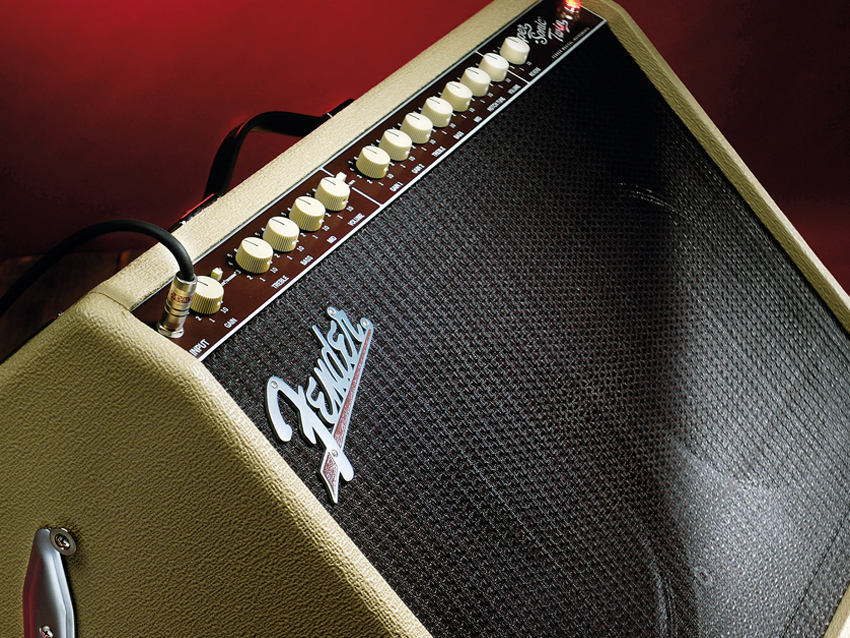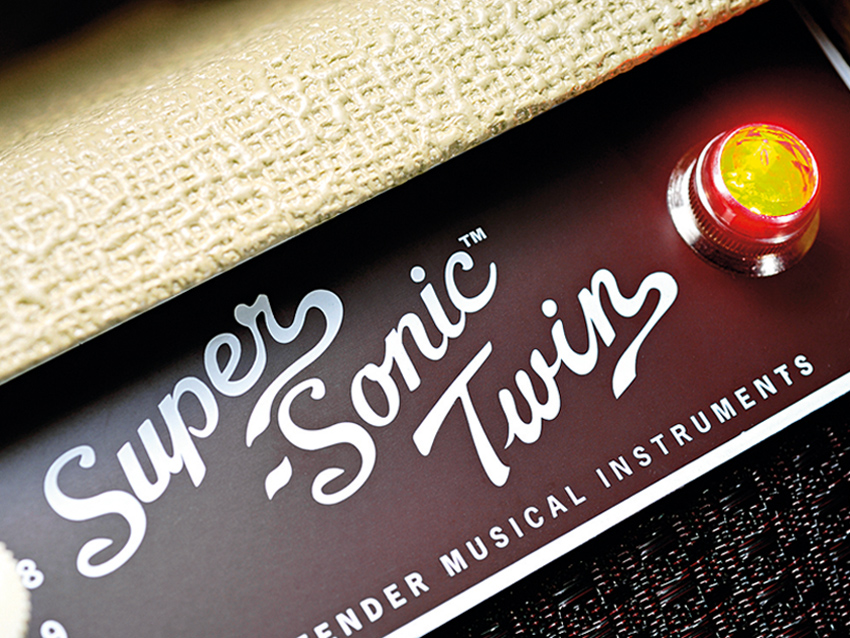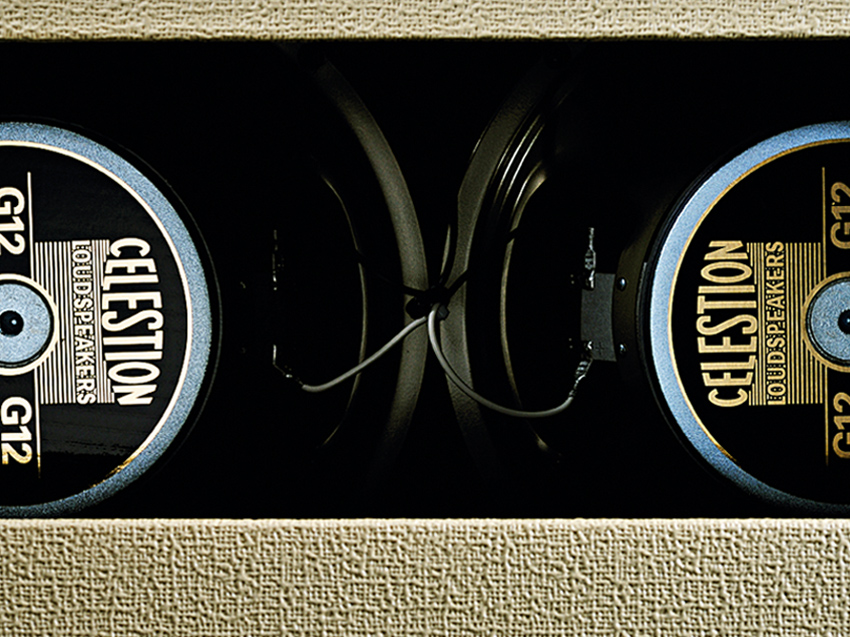MusicRadar Verdict
A Twin Reverb for the 21st century - this should become of the standard hire amps for festivals, clubs and studios.
Pros
- +
The best-built non-Custom Shop Fender amp we've seen in a long time.
Cons
- -
Quite pricey. We'd prefer less speaker damping on the Burn channel. Very heavy.
MusicRadar's got your back

Fender Super-Sonic Twin Combo

Fender Super-Sonic Twin Combo

Fender Super-Sonic Twin Combo

Fender Super-Sonic Twin Combo
Way before the first sketches of the Esquire were drawn out in the office of his radio shop at 107 S Harbor St, Leo Fender was already building amplifiers - originally with another genius inventor, Clayton 'Doc' Kauffman, under the K&F brand, before putting his own name on the control panel in around 1946.
Over the next 15 years, Fender would practically write the book on guitar amp design… as well as put out a couple of half-decent guitars along the way! The archetypal small combos, which are still very popular today, were partnered by the first high-powered designs - including the Tweed Bassman and the non-reverb Twin.
"The Super-Sonic Twin's weight stretches to the limit the notion that combos are portable."
The latter was introduced in 1953, 10 years before the famous Twin Reverb. Over half a century later, the 2 x 12 high-powered combo format Leo invented is still one of the standards for guitar amplification, and so it should come as no surprise to see Fender adding another amp to its increasingly popular Super-Sonic range - the Super-Sonic Twin.
The Super-Sonic Twin comes in two finishes, crossover 'Blackface' with silver grille, or this sample's blonde vinyl with oxblood grille. Apart from the non-matching black and chrome handle, we think it looks superb, evoking the coveted non-reverb Twin of 1960-62, one of the best-looking amps ever to come out of Fullerton.
One tiny disappointment is the slightly uneven grille cloth on this sample - functionally it doesn't affect anything, of course, but if you're spending the thick end of two grand on an amp you'd quite rightly hope for more attention to cosmetic detail.
The electronics are contained in the usual neat and robust steel chassis, with pressed and welded sides. As you'd expect, the internals are dominated by circuit boards: four through-plated main ones for the front panel controls, preamp, power supply and effects loop, along with a few smaller ones that all appear to be up to the sort of standard we'd expect to see in a Fender.
Crucially, the valve bases - all 13 of them - are hand-wired and bolted direct to the chassis, as are the main switches and loudspeaker jacks. Consequently, there's a lot of wiring inside this amp, but it's all been neatly tied together.
The two Celestion Vintage 30 loudspeakers are wired in series rather than traditional parallel for a total 16-ohm load, apparently to keep compatibility with other Fender enclosures.
It's a proper two-channel design, with a clean channel that footswitches between two iconic Fender sounds: the traditional Twin Reverb, or the slightly more gained-out and mid-biased Tweed Bassman, and there's also a proper three-band EQ, with gain and volume controls.
On the dirty side, the lead channel, or Burn as Fender calls it, features dual cascaded gain controls, a master volume and a three-band EQ, with a variable mid-range notch control that significantly alters the channel voicing.
A busy rear panel includes a footswitchable effects loop with send and return level controls, preamp out and power amp in patching sockets, a three-way impedance changer and Fender's own digital biasing and output valve protection module, which automatically sets bias current for each valve at start-up and allows a limited amount of user adjustment to slightly hotter or cooler bias settings than normal.
There's also an output level switch that offers a reduced 25-watt Club setting or the full Arena 100-watt option, and a three-position loudspeaker damping control.
The four-button foot controller also plugs in at the back - it changes channels, toggles the reverb and effects loops, and swaps the voice modes for the clean channel.
A slight annoyance is that the clean channel modes are labelled Normal and Fat on the foot controller, while the control panel calls them Twin Reverb and Bassman. Overall, as well as being good-looking this is a robust amp, built to handle serious pro touring and extended use without any fuss, and it's very reassuring to see Fender hand-wiring those valve bases again.
Sounds
With the appropriate setting dialled in on its clean channel, the Super-Sonic delivers exactly the right balance of low end punch and sparkling treble you'd expect from a Twin, with a balanced mid-range that flatters humbuckers while keeping Strats and Teles in the right ballpark.
Switching to Bassman mode adds a powerful mid boost and a dose of extra volume. However, despite the gain control, there isn't quite enough overdrive to produce the classic Bassman squawk when driven hard. There's just enough level to get a mild edge on the attack of a note but this channel's real strength is producing great clean sounds.
The Burn channel's two cascaded gain controls are voiced differently. Gain one is aggressive and edgy, while gain two is thicker and more compressed. You can combine both for a wide range of distortion tones to cover most needs, from classic rock and blues to modern fusion and ballad solos - practically everything apart from out and out metal.
The mid notch control adds more variation, from an exaggerated sucked out scoop to a nasal honk - it certainly adds versatility, although in practice only the middle third of this control provides truly usable tone.
Overall, the Super-Sonic's Burn channel can cover practically any base, although we initially found it to be a little too stiff and unyielding, even using the low-power 25-watt setting.
Using the speaker damping switch on its loose setting made a significant improvement though, causing us to wonder if maybe even less damping would give this amp the kind of dynamic response it really needs?
The reverb comes from a traditional transformer-coupled long-pan spring, driven and recovered by valves. Used at sensible settings it's very good and will put many a digital reverb unit to shame.
With two Vintage 30s delivering the decibels, it also goes without saying that this is one seriously loud amp, although the sheer power of all that headroom really needs to be experienced first hand to be appreciated - you can literally feel the air being pushed.
Aimed primarily at semi-pro and professional players, the Super-Sonic Twin's weight stretches to the limit the notion that combos are portable. But on the positive side all that hardware adds up to a tough, reliable package that should handle anything you might want to throw at it -definitely a case of 'never mind the quality, feel the weight'.
We think the Burn channel could prove fiddly to dial in for some. However, the clean channel provides instant gratification with excellent vintage Fender tone.
Considering all that's on offer here, the price tag is reasonable, and the street figure will be somewhat less, although at this level Fender is up against serious competition from big brands as well as some boutique builders.
However, they'll all come up against one thing that's only available with the Super-Sonic and that's the Fender badge on the front. If you want the ultimate modern incarnation of the Twin Reverb, here it is.
With its latest free update, Ableton has finally turned Note into the app I always wanted it to be
Technically capable, but struggle to make your tunes sound musical? 5 simple music theory hacks to make your tracks stand out
"Despite its size, it delivers impressive audio quality and premium functions as well as featuring a good selection of inspired sounds": Roland GO:Piano 88PX review









